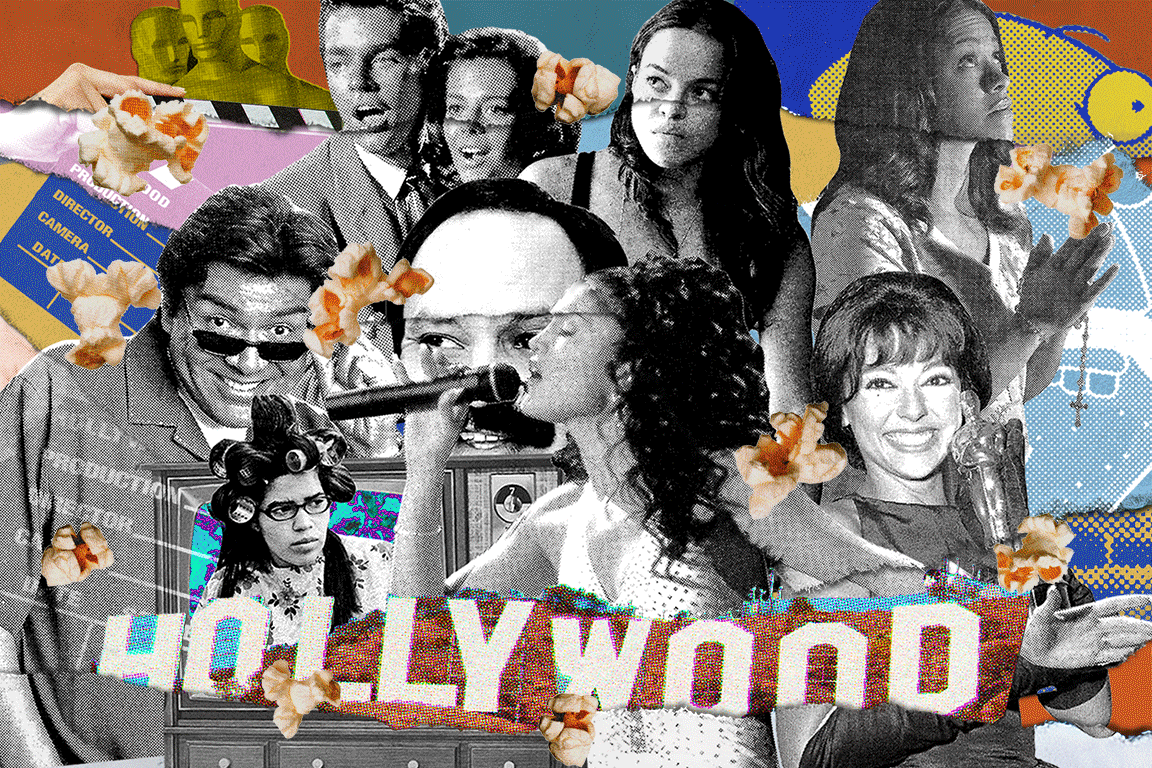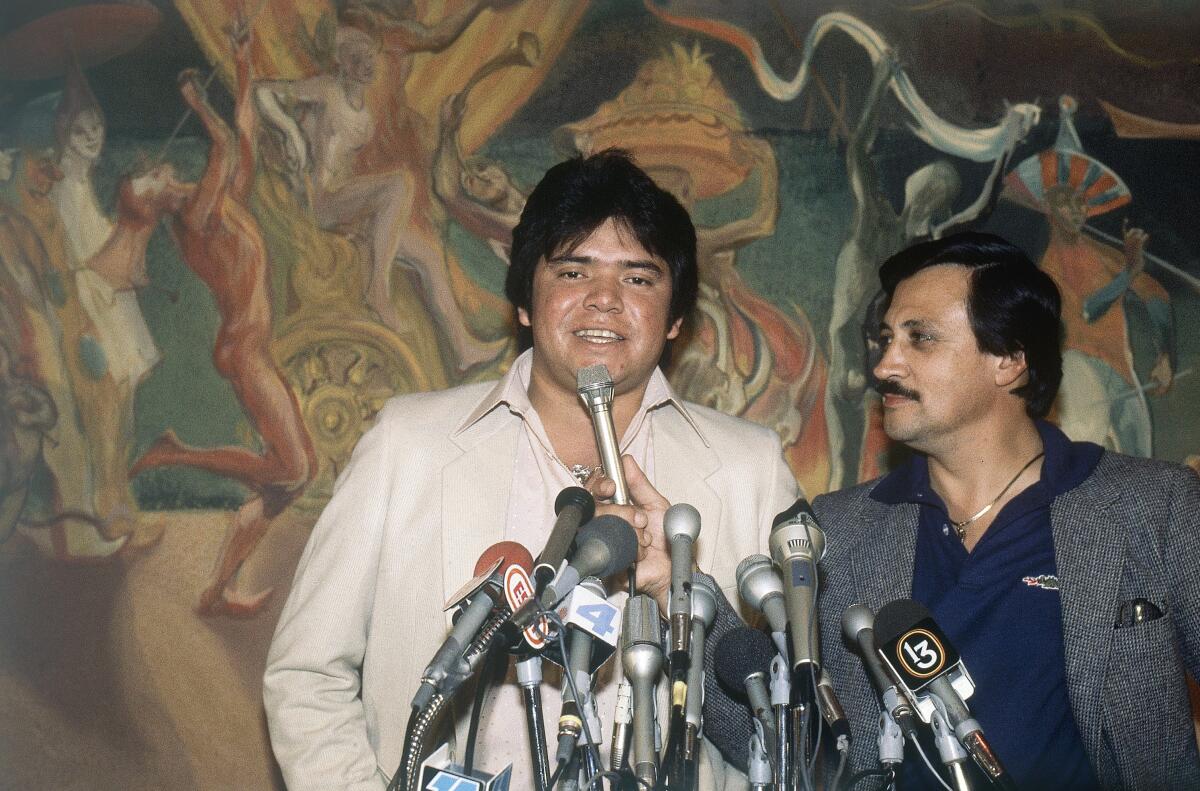Latinx Files: ‘In the Heights’ and the pitfalls of Latinx representation
- Share via
Last Friday’s premiere of “In the Heights” was supposed to be a watershed moment for Latinx representation in Hollywood. The adaptation of the Lin-Manuel Miranda musical was being characterized as the Latinx “Black Panther” or “Crazy Rich Asians,” a big-budget movie that would prove once and for all that there is money to be made in telling our stories.
The Latinx experience chronicled
Get the Latinx Files newsletter for stories that capture the multitudes within our communities.
You may occasionally receive promotional content from the Los Angeles Times.
By Monday, the conversation around “In the Heights” had drastically shifted thanks to a video interview produced by the Root in which reporter Felice León asks the movie’s director and cast why there were so few Afro Latinx characters when the neighborhood it purports to represent is predominantly Afro Latinx. The video went viral, sparking accusations that the movie was yet another example of the colorism that exists within the Latinx community. The backlash was severe enough that Miranda issued an apology and promised to do better.
“I can hear the hurt and frustration over colorism, of feeling still unseen in the feedback,” he wrote on social media. “I hear that without sufficient dark-skinned Afro-Latino representation, the work feels extractive of the community we wanted so much to represent with pride and joy.
“In trying to paint a mosaic of this community, we fell short,” he wrote. “I’m truly sorry.”
It’s easy to say this with the benefit of hindsight, but “In the Heights” was never going to live up to its expectations. Framing a work of art as the Latinx anything is a doomed endeavor from the start. The biggest misconception people have about Latinidad — including many who claim it — is that there is one singular experience. No work of art, no matter how well-intentioned, will ever truly represent the totality of a group of 60 million people.
In truth, Latinxs will never achieve equitable representation until Hollywood starts telling enough of our stories that they become commonplace. And yes, that includes movies and TV shows that center Afro Latinxs, who despite largely being excluded from our screens make up 25% of the total U.S. Latinx population.
It’s a reality that actor Gina Torres seems to understand. Torres, whose parents are Cuban immigrants, has spent much of her career “hiding in plain sight” playing non-Latinx Black roles because she didn’t fit the conventional idea of what a Latinx looks like. She told CNN this was why it was so important that when she was offered the female lead role in “9-1-1: Lone Star,” she asked for her character to be explicitly Afro Latinx.
“I need to speak my language [Spanish] whenever possible,” Torres said. “I need to let the audience know that this is also a face of Latinidad.”
[ Despite the positive critical reception and marketing campaign, “In the Heights” underperformed at the box office. My colleague Ryan Faughnder, who writes the Wide Shot newsletter, has this great explainer on why it felt short. ]
Consider subscribing to the Los Angeles Times
Your support helps us deliver the news that matters most. Become a subscriber.
Hollywood’s Latino culture gap

On Sunday, The Times published a special report examining “the complicated history of Latinos in Hollywood and the actions being taken to increase their representation.” This comprehensive project, which was reported and written almost entirely by Latinx staffers, is very much worth your time. Some highlights:
— Reporter Daniel Hernandez wrote this report about the current state of affairs. He also did a Q&A with Rep. Joaquin Castro about the politician’s efforts to put pressure on the industry to fix the problem.
— This timeline is exactly what the headline suggests: A brutal, honest history of Latinxs in Hollywood. Vanessa Martínez and Aida Ylanan also did this comprehensive analysis that shows just how bad Latinx representation has been in front of and behind the camera in the last decade.
— Yvonne Villareal spoke with the writers of “Selena: The Series,” who revealed that the show’s budget was significantly lower than other Netflix productions in part because it was categorized as a Latin American project.
— Robert J. Lopez and Gustavo Arellano wrote about their respective personal experiences trying to break into Hollywood. For The Times podcast, Arellano also spoke with actors Edward James Olmos and Cristela Alonzo about Hollywood’s Latinx culture gap.
— Columnist Carolina Miranda wrote about how the trend of rebooting white shows with Latinx casts needs to end; Julia Barajas reported on how Boyle Heights became the backdrop of choice for Latinx stories; Suzy Exposito examined the legacy of the teen sitcom “Taina” 20 years later; and I wrote about how Latinx audiences have long been critical to the film industry and how franchises like “Fast & Furious” prove that we are more than capable of carrying a Hollywood blockbuster.
Fernandomania @ 40: How Fernando Valenzuela changed the Dodger fan base forever

The latest installment of our multi-part documentary series “Fernandomania @ 40” is out today. You can watch here.
Before 1981, the fan base for the Los Angeles Dodgers was predominantly white. Fernando Valenzuela changed all that.
The sixth episode in the series explores how the frenzy around Fernandomania forever altered the makeup of the fans in the bleachers. The pudgy miracle man from Etchohuaquila not only was winning games for the Dodgers, but almost single-handedly transformed the Dodgers into a team that looked a lot more like Los Angeles itself.
Missed an episode? You can catch up by heading to our special “Fernandomania @ 40” section.
Meet our Latinx staff: Steve Saldivar
The Los Angeles Times employs more than 100 Latinx journalists. One of the goals of this newsletter is for you to meet them all. This week, video journalist Steve Saldivar talks about his aspirations to end up at The Times and how he approaches his very vital work of chronicling Angeleno life.
You can’t miss it.
Even when traffic flowed easy, you couldn’t ignore the Old English typeface letters announcing themselves. For as long as I can remember, driving on the 10 Freeway, you would see “Los Angeles Times” hanging on its printing plant. I first mistook it for the newsroom. It didn’t matter.
Those glances from the car were quiet promises to myself that I would work there one day. As the rejections came — for a summer internship, a Metpro class and the rare job opening — those views from the passenger seat window became less of a reminder and more of a mirage.
I eventually got in. Not into the printing plant, but into the historic downtown L.A. offices. Then it was in El Segundo. The buildings change, but that too was a reminder that the stories we look for are not in offices but in the streets.
That’s where I learned about the hardships so many of our family members who are taqueros were having during the pandemic. It’s where families grieved for those they lost because of COVID-19. It’s where we tell our stories.
I still pass by the printing plant, and those letters still catch my attention. Now I think about my younger self and his promises — not so much the building.
I miss that.
The best thing on the Latinternet: Why aren’t there more Afro Latinxs in “In the Heights?”
I mentioned it at the top of the newsletter, but Felice León’s Zoom interview for the Root with “In the Heights” director Jon M. Chu and several cast members deserves its own special shoutout. It was easily the best thing I saw on the Internet this week. You can find it here.
In her write-up, León said that she wanted to ask Lin-Manuel Miranda about the noticeable absence of Afro Latinx characters in the movie, but her request to interview the “In the Heights” creator was not approved.
She might not have gotten a chance to ask him a question directly, but her viral video certainly caught the attention of its intended audience. More importantly, it brought to the forefront the very necessary topic of colorism and anti-Blackness that exists within our community.
The Latinx experience chronicled
Get the Latinx Files newsletter for stories that capture the multitudes within our communities.
You may occasionally receive promotional content from the Los Angeles Times.







